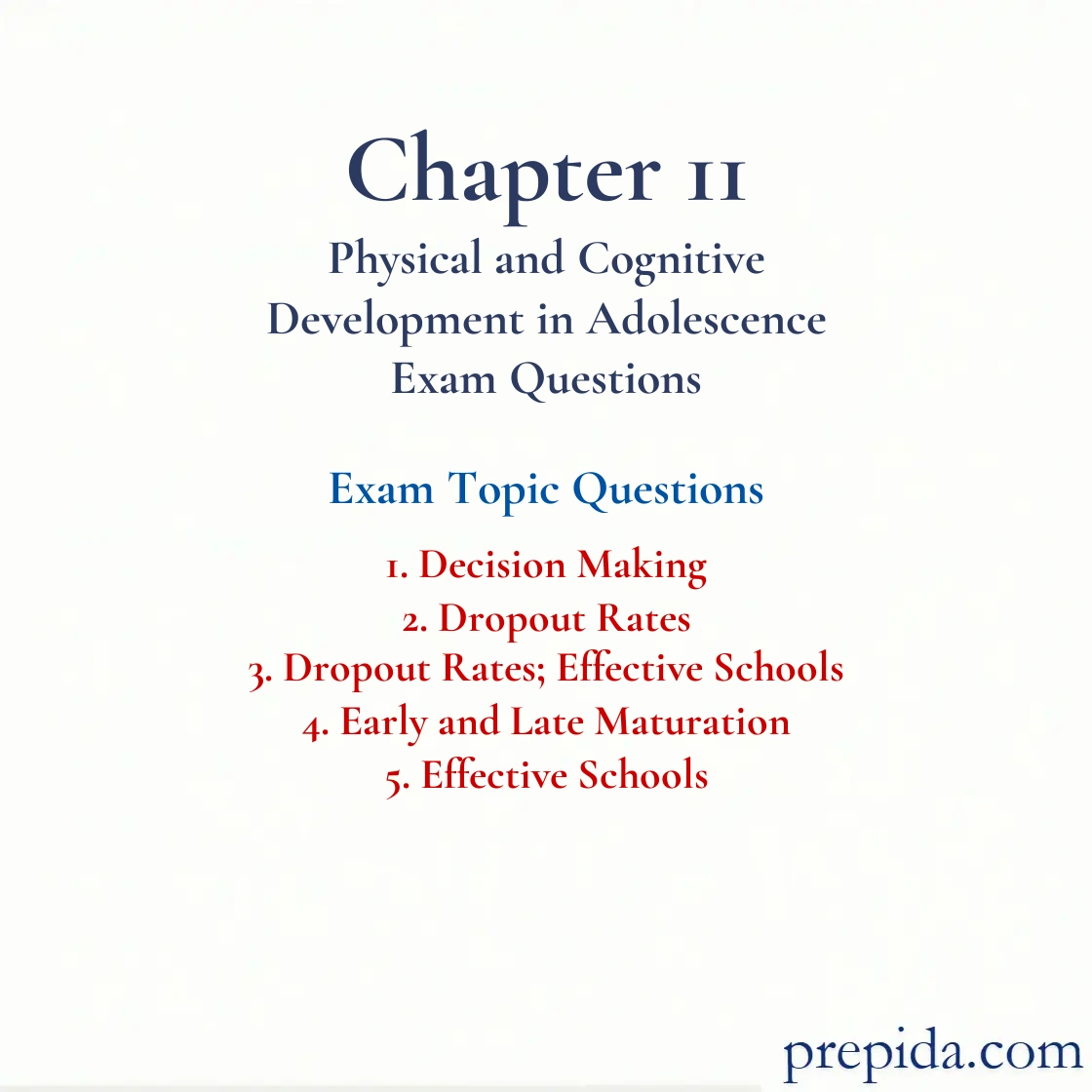
George wants to ensure that his sons become competent decision makers. Which of the following is a strategy you would suggest for improving their decision making?
- Provide more opportunities for them to engage in role playing and peer group problem solving.
- Encourage the presence of peers in risk-taking situations.
- Supply contexts where substances and other temptations are readily available, testing their willingness to make risky decisions.
- Keep them in a sequestered environment where they will not have to face decision making in real-world contexts.
Gina, a 15-year-old, needs to assess a risky situation to quickly get the gist of what is happening and glean that the situation is a dangerous context. She is unlikely to benefit from engaging in reflective, detailed, higher-level cognitive analysis about a decision, especially as it is a high-risk, real-world context where she would get bogged down in trivial detail. This kind of decision making is explained by the
- cognitive model of emotion.
- fuzzy-trace theory dual-process model.
- tripartite model.
- heuristic-systematic persuasion model.
Fuzzy-Trace Theory Dual-Process Model: States that decision making is influenced by two systems—“verbatim” analytical (literal and precise) and gist-based intuition (simple bottom-line meaning)—which operate in parallel; in this model, gist-based intuition benefits adolescent decision making more than analytical thinking does.
The average U.S. high school dropout rates mask some very high dropout rates
- in high-income areas of the suburbs.
- among adolescents in the 13- to 15-year age group.
- among Asian American adolescents.
- in low-income areas of inner cities.
Socioeconomic Status (SES): Refers to the grouping of people with similar occupational, educational, and economic characteristics.
In the last half of the twentieth century and the first several years of the twenty-first century, U.S. high school dropout rates
- increased
- declined.
- remained unchanged.
- plateaued.
Which of the following is a school-related reason for leaving school?
- poor economic condition
- pregnancy
- being expelled
- marriage
Identify a strategy that can help prevent students from dropping out of school.
- enrolling the students only in a community-based education and reducing parental monitoring
- providing early intervention for reading problems, tutoring, counseling, and mentoring
- facilitating and emphasizing peer learning
- using rotation model for the students in high school
A dropout prevention program functions by "adopting" entire grades from public elementary schools, or corresponding age cohorts from public housing developments. These children are then provided with a program of academic, social, cultural, and recreational activities throughout their elementary, middle school, and high school years. Identify this program.
- Bill & Melinda Gates Foundation program
- The Growing Together program
- "I Have a Dream" (IHAD) program
- The Teen Outreach Program (TOP)
Identity Achievement: Marcia’s term for the status of individuals who have undergone a crisis and have made a commitment.
According to various research studies, early-maturing girls are more likely to ________ than late-maturing girls.
- have younger friends
- be taller and thinner
- graduate from high school
- have an eating disorder
Binge Eating Disorder (BED): Involves frequent binge eating but without compensatory behavior like the purging that characterizes bulimics.
In a study by Simmons and Blyth (1987), in the sixth grade, early-maturing girls showed greater satisfaction with their figures than did late-maturing girls, but by the tenth grade, late-maturing girls were more satisfied. A possible reason for this is that in late adolescence, late-maturing girls are ________ than early-maturing girls.
- taller
- more intelligent
- more beautiful
- stockier
In the Berkeley Longitudinal Study some years ago, early-maturing boys perceived themselves ________ than did their late-maturing counterparts. When the late-maturing boys were in their thirties, however, they had developed a ________ than the early-maturing boys had.
- as an anomaly; stronger feeling of inadequacy
- more positively; stronger sense of identity
- as misfits; more negative self-image
- more negatively; deeper sense of regret
Identity Achievement: Marcia’s term for the status of individuals who have undergone a crisis and have made a commitment.
Maggie is 14 years old and has not yet matured physically. According to recent research, which of the following will most likely occur by the time Maggie reaches tenth grade?
- She will be more satisfied with her figure than early-maturing girls.
- She will be less satisfied with her figure than early-maturing girls.
- She will be more likely to have an eating disorder than early-maturing girls.
- She will be more likely to drop out of school than early-maturing girls.
The Carnegie Corporation evaluated U.S. middle schools and recommended that
- smaller "communities" or "houses" should be developed to lessen the impersonal nature of large middle schools.
- schools should increase the use of technology, computers, and skills that will be needed in the 21st century.
- schools should add more grade levels to encompass a wider age range to reflect differences in adolescent development.
- middle schools should be integrated with high schools so that younger adolescents can take advantage of having older adolescents as role models.
Crowd: A larger group structure than a clique that is usually based on reputation; members may or may not spend much time together.